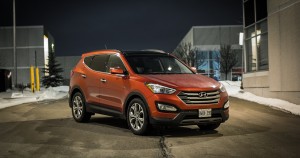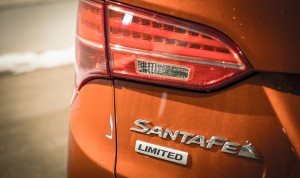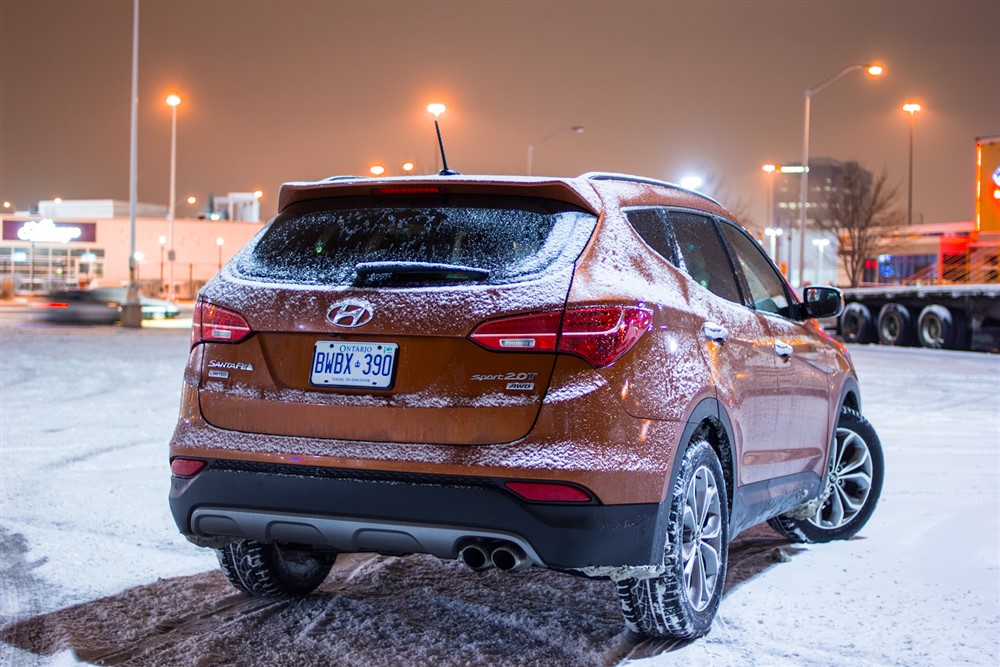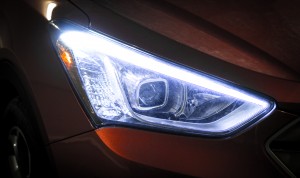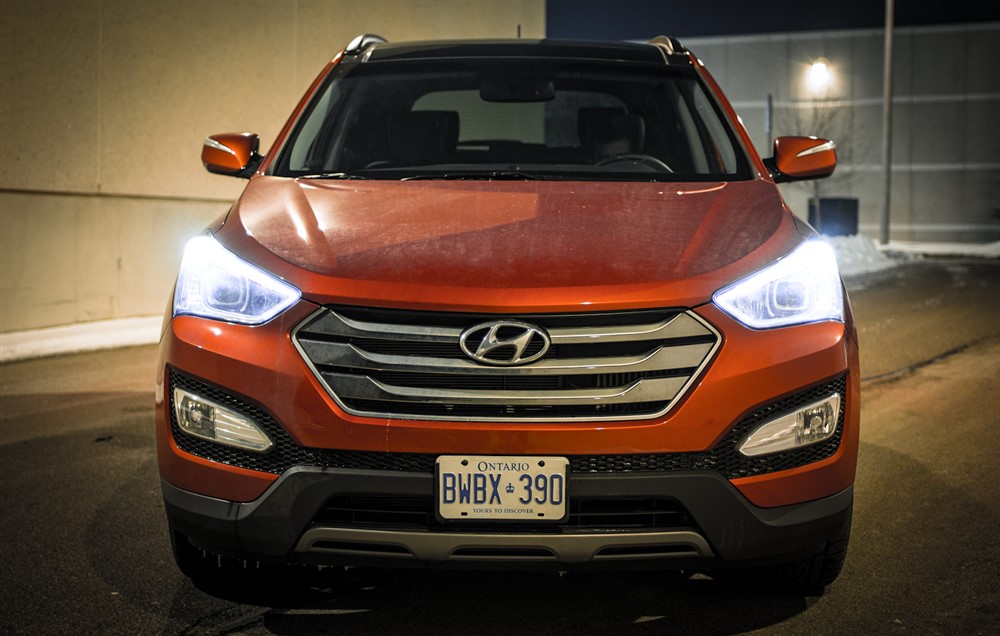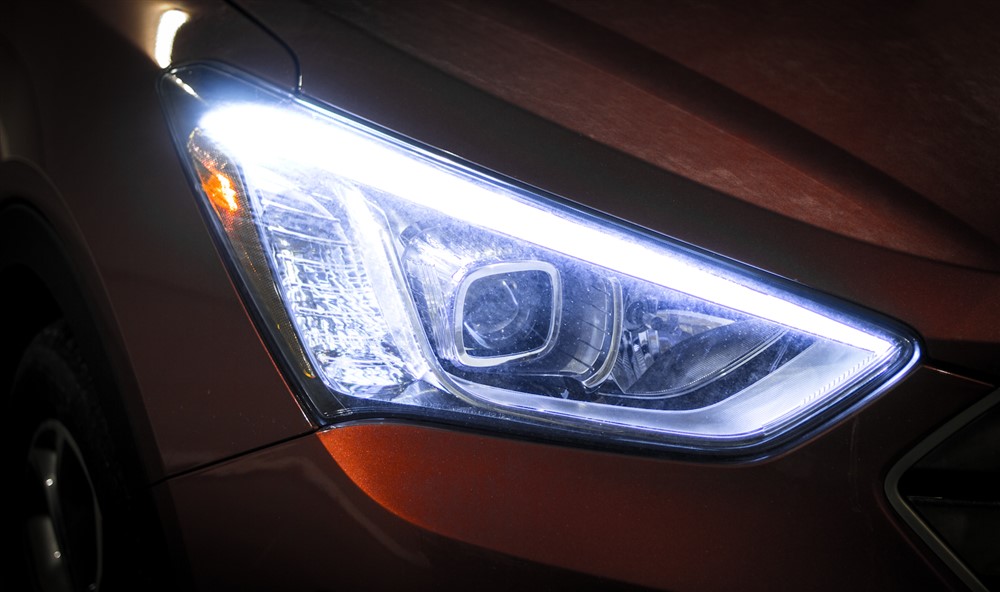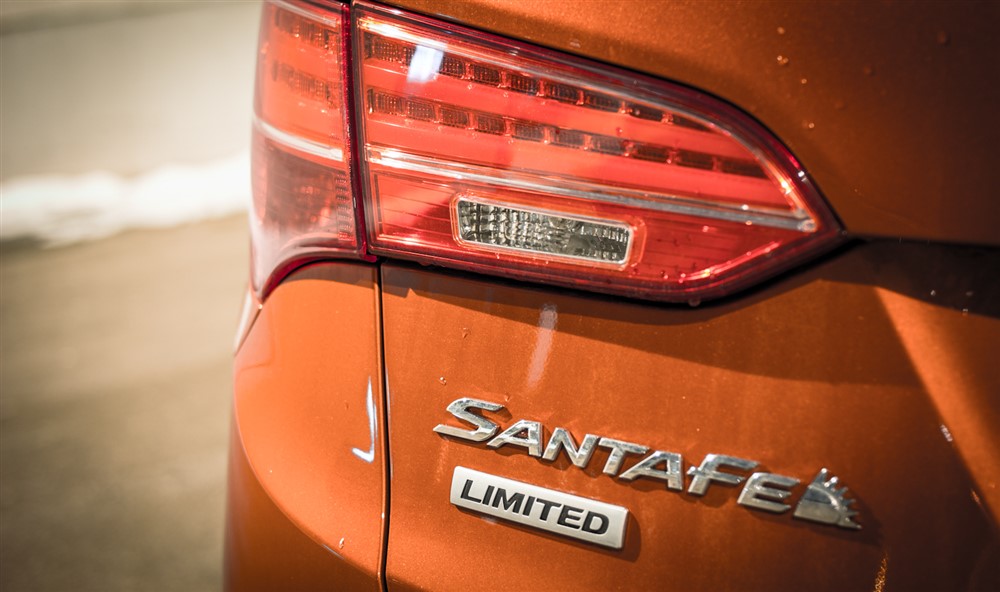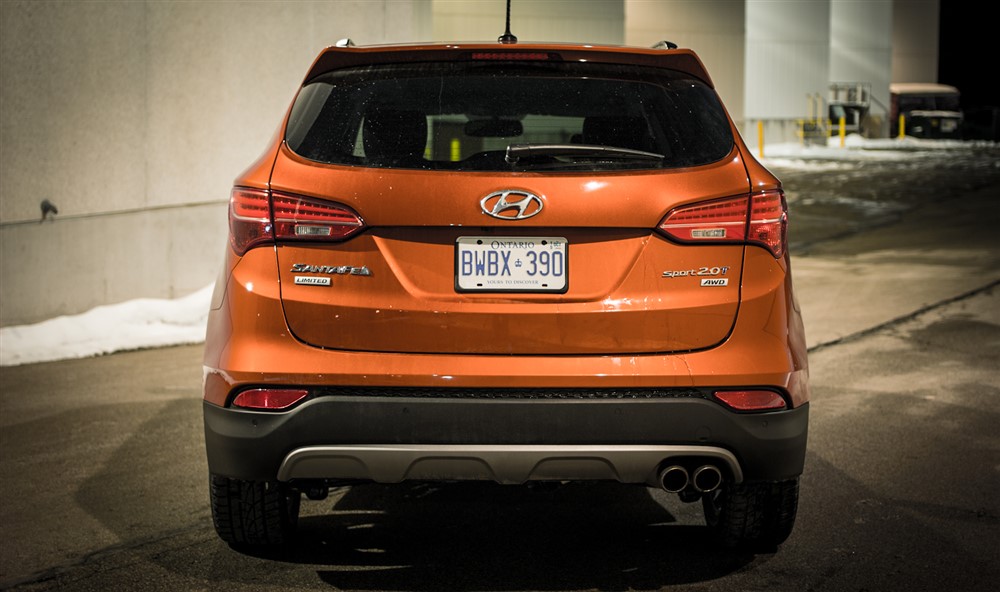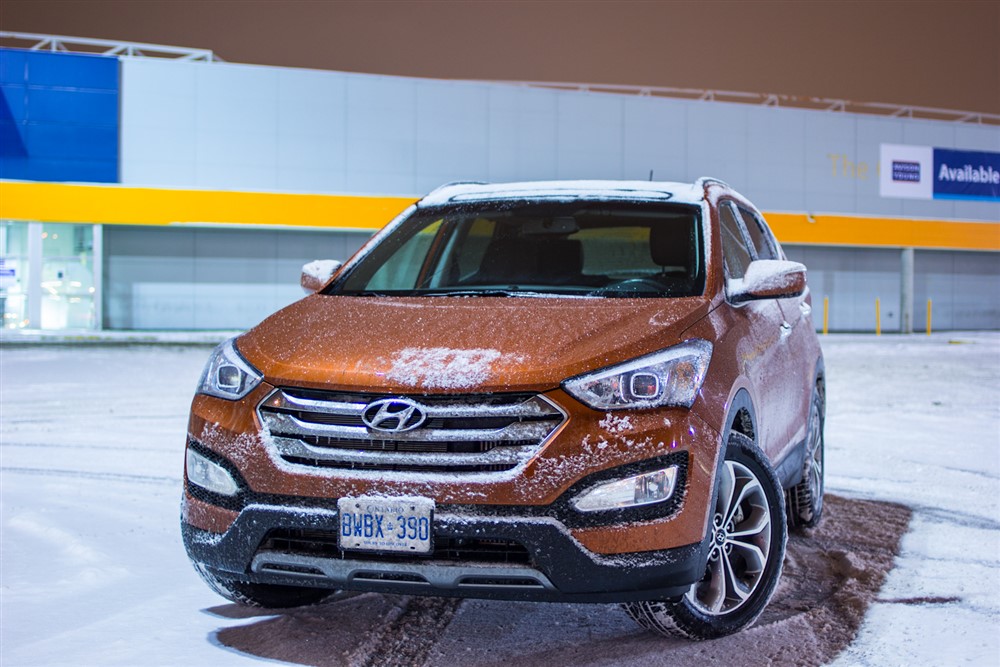It’s been a wonderful four months of winter and no; I’m not being sarcastic. Living in Toronto, winter is often a dreaded season due to the bitter cold temperatures, the prevalence of snowy conditions, and the overall miserable atmosphere in the otherwise beautiful city. With regards to our media coverage, the sports cars we crave tend to disappear for six months and are replaced by luxury sedans, SUVs, and other all-wheel-drive vehicles. This year though, winter in the DoubleClutch.ca garage seemed to pass by quicker. The only real change this year was that throughout the season, we had the 2015 Hyundai Santa Fe Sport 2.0T Limited in our garage for the entirety of our season.
I don’t often get excited about vehicles that aren’t catered to the enthusiast. Mainstream, family-oriented cars and SUVs are nice and all, and I appreciate them just as much as the next guy, but they really do nothing to tickle my fancy as a car guy. Most crossovers appear similar, their ~150-250 horsepower engines feel generally the same, and their versatility is usually consistent throughout the segment irrespective of which manufacturer the vehicles hail from. This one though; there’s something special about it. Perhaps it’s the Canyon Copper paintjob that lets it stand out as stylish and unique, or perhaps it’s the fact that it packs a turbocharged engine that pumps out 264 horsepower and 269 lb-ft of torque, making it a leader in its class. Whatever it is, this Santa Fe is properly cool.
We spent a few intimate months with this particular Santa Fe Sport, and got to know it better than most of our other test vehicles, the majority of which spend about a week in our possession. During this time, we got to take it on a road trip, use it in our daily commutes, and even move things with it. We used it as a camera vehicle when doing rolling photos of other testers, piled the whole team into it to go out for dinner, and parked it proudly amongst the other vehicles during our weekly team evaluation nights. Every single member of our team had ample wheel time behind the Hyundai, and we learned a lot about it.
As we broke it in further (the car had 900km on it when we received it), we learned that fuel economy improved drastically. A friend of ours who works for Hyundai Canada had informed us of this before picking up the car, but it was nice to see average highway fuel mileage drop from 10L/100km down into the 8.5L/100km range. By the end of our 8,000+km test, we averaged a combined 9.9L/100km. There is no real way to determine what percentage of this driving was city and highway, but knowing my team, I’d assume it was half and half. Considering the Santa Fe Sport gets away with regular fuel despite having a motor with forced induction, these numbers aren’t bad at all. It also helps that during our time with this SUV, fuel prices were approaching rock bottom.
It’s not just in economy and overall versatility that the Santa Fe excels; it’s the styling. When Hyundai redesigned the Santa Fe for model year 2013, they basically redefined the segment and justified the fact that crossovers don’t need to look bland in order to sell well. The likes of the Toyota RAV4, the Nissan Rogue, and Honda CR-V are examples of great competitors that lack that edgy styling to stand out from the class. Of course, this is a class that is extremely populated, so contenders need to make use of every possible edge they can have. Things like the stunning LED lighting and the heated rear seats help the Santa Fe maintain its edge here.
At just under $40,000 fully loaded, our Santa Fe Sport was the Limited trim level, the proper way to do a Canadian winter. Given we returned the SUV to its home at Hyundai headquarters just before the warmer weather started to emerge, we didn’t get an opportunity to use its ventilated front seats or air conditioning system. However, I will say that the climate control system (dual-zone) is amongst the best in the industry in terms of user-friendliness. In a market where touch-sensitive controls are becoming more and more prominent, it was nice to have a large center-mounted knob to toggle fan speed, and dedicated buttons for temperature controls. These controls worked flawlessly even in the bitter cold, along with the heated seats and steering wheel.
It’s not all utility and comfort either; Hyundai has done something that other automakers haven’t. They’ve made it possible to shut off all stability/traction control systems, making it entirely possible to take the all-wheel-drive crossover onto a snow-covered course and have some fun. Just like in the Korean manufacturer’s brilliant Genesis Coupé, pressing and holding the stability control button for three seconds disables all assist systems. This doesn’t just have to be for fun; turning the systems off can also help get a snow-stranded vehicle un-stuck should you find yourself in such a situation.
In 2013, the Hyundai Santa Fe XL won our “Best Family Vehicle” category in our Annual Awards. This past year, it was edged out by the Subaru Outback for a few reasons; one of them being that our entire team will argue the advantage in versatility of a station wagon over an SUV/crossover. The reality of the situation though is that the vast majority of families opt for the crossover, and when it comes to affordability, versatility, comfort, and premium options, I have yet to see a more complete package than the 2015 Hyundai Santa Fe Sport. Most buyers will opt for trim levels that hover around the $30-34,000 mark, and even at that point, this is one solid option. It was a wonderful few months, and it really does seem like just yesterday that our entire team was ecstatic to take delivery. Our long-term test ends with one conclusion – the Santa Fe is one of the best in its segment.
Long-Term Test Conclusion Gallery
See Also:
Long-Term Test Introduction: 2015 Hyundai Santa Fe Sport 2.0T

